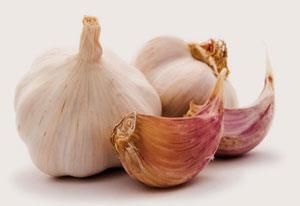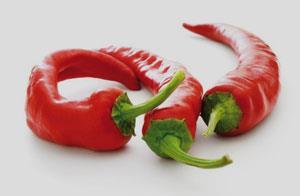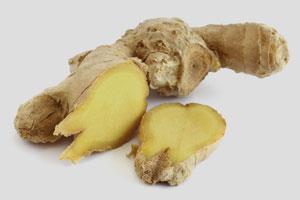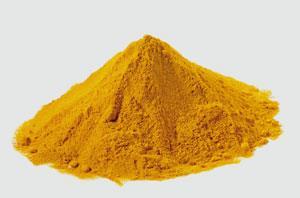Many of the world's favourite ingredients have more to offer than just flavour, says Ned Stafford. Many also show health benefits
Many of the world’s favourite ingredients have more to offer than just flavour, says Ned Stafford. Many also show health benefits
Garlic
To stink or not to stink, that’s often the question when deciding how much garlic to pep up your dinner with. A few years ago, health-conscious cooks might also have wondered whether eating garlic would improve their health, or if such claims were just hype. Any such doubts have now been laid to rest by hundreds of scientific studies confirming garlic’s powerful medicinal properties.
’Garlic is one of the most researched medicinal plants ever - its health benefits are not anecdotal, but have been scientifically documented,’ says Jeya Henry, director of the Functional Food Centre at Oxford Brookes University, UK. ’We now know that garlic can ward off many common ailments.’ If he were banned from eating all medicinal plants except one for the rest of his life, Henry would not give up garlic. ’It has the widest health advantage and has good scientific backup.’

The health effects of garlic, a close relative of onions, shallots, leeks and chives, come mostly from its many sulfur-bearing compounds, designed by nature to make the plant unappetising to pests. Unfortunately for garlic plants, humans from the very beginning liked the taste - and the health benefits. Workers building Egyptian pyramids thousands of years ago were allotted daily garlic rations for strength, as were conquering Greek and Roman soldiers. Louis Pasteur in the late 1850s observed garlic’s antibacterial activity. Since then, chemists around the world have worked to unlock garlic’s secrets.
Henry sees garlic’s five most important health properties as antibiotic; anticancer; blood thinning; antiviral; and antifungal. But garlic has also been shown to help in the fight against high blood pressure, high cholesterol, Aids, arthritis, diabetes, influenza, leprosy and tuberculosis. ’Everyone should eat garlic,’ says Henry. ’It would be a pity not to take advantage of this wonderful food that nature has given us.’
John Milner, head of the nutritional science research group at the National Cancer Institute in Maryland, US, says ’the evidence is pretty good’ to support garlic’s myriad health benefits, but adds that more studies are needed to fully understand these effects. While the benefit of some of garlic’s sulfur compounds have been established, several other compounds and their interactions are still not understood, he says.
The organic sulfur compound allicin, with powerful antibacterial and antifungal properties, is garlic’s most discussed compound and is often found in supplements sold in tablet form. Cooking garlic tends to break allicin down, and some experts believe garlic should always be eaten raw for full benefit - although this is not substantiated, Henry says.
As well as organic sulfur compounds, garlic is packed with enzymes, vitamin B, proteins, minerals, saponins, flavonoids, and many other compounds. ’Understanding this complex mixture is a major challenge,’ Milner admits.
Both Milner and Henry believe that garlic supplements containing one or two compounds cannot come close to duplicating the health benefits of real garlic. Henry says, ’My gut intuition is that in medicinal plants, [compound] one plus [compound] two equals four. But pharmaceutical companies want to sell a single compound.’
Ronald Cutler, who studies allicin at Queen Mary, University of London, UK, strongly disagrees with Henry’s and Milner’s contention that nature cannot be duplicated in the lab. Cutler has extracted allicin from garlic and used it in hospital studies to effectively treat antibiotic-resistant strains of MRSA (methicillin-resistant Staphylococcus aureus).
Cutler, also a scientific advisor to UK-based firm Allicin International, which markets the extract in various forms, says: ’Nature has shown us the way. It is up to us to take nature’s lead and improve it.’ However, Cutler fully agrees with Milner and Henry about the complexities of garlic and the need for deeper research. ’There’s tonnes about garlic we don’t know,’ he says.
And there’s still the big question of garlic’s distinctive aroma. Henry, born in India and raised in Sri Lanka, believes Europeans should be more open-minded about the smell. ’Most Asian cultures are not averse to the smell of garlic,’ he says. Fennel seeds, clove and cinnamon can help negate garlic odour, he adds.
Chilli
When it comes to taste, the chilli family offers probably the widest spectrum of possibilities of any food family, ranging from meek bell peppers to roaring habaneros that taste like fire.
That burning sensation comes from a group of compounds called capsaicinoids. Capsaicin (8-methyl-N-vanillyl-6-nonenamide) is the most prevalent capsaicinoid in chillies, and also the most widely studied of chilli’s medicinal compounds, having been linked with a wide range of potential health benefits, from anticancer to antidiabetes, and as a pain reliever for everything from arthritis to migraines.

Chilli has been eaten by humans in the Americas since at least 7500 BC, and spread around the world after Columbus discovered America. In the US, New Mexicans boast that their ’chile’ (they use the Spanish spelling) is the best tasting in the world. Mary O’Connell, a biochemist and chilli expert at New Mexico State University in Las Cruces, claims she does not eat chilli for the health benefits. ’It tastes so very good,’ she says.
In addition to the pungent capsaicinoids, chillis contain two other notable chemical classes; carotenoids and essential oils. Carotenoids account for chillis’ colour (as they do in tomatoes) and the oils produce the aroma and flavour.
When eaten, the capsaicinoids in chilli produce the burning sensation by binding to TRPV1 pain receptors. ’Capsaicinoids with shorter chain lengths hit the front of the tongue, and burn for shorter times; while capsaicinoids with longer chain lengths may reside in the receptor longer, burn longer and tend to hit the back of the palate,’ says O’Connell.
When capsaicin binds to TRPV1 receptors, the eater’s body releases endorphins, natural pain relievers that resemble opiates in making people feel good. The compound also increases body metabolism, Jeya Henry, director of the Functional Food Centre at Oxford Brookes University, UK, has found - so people who regularly consume chillies are less likely to gain weight, he adds.
While cooking alters some compounds, Henry says, ’Cooked or raw does not make a difference for (capsaicin in) chillies. That is why it burns you twice - once when you eat it, and again later when it leaves the body,’ he chuckles.
Of the potential health benefits of chilli, O’Connell says, ’The analgesic activity of capsaicin is historical and widespread throughout many cultures. This is one that I am comfortable recommending to people.’ The antiviral benefits probably are not directly related to capsaicin, she says, but to sinus clearing, analgesic effects or perhaps the high levels of vitamin C. Chilli carotenoids are good sources of antioxidants, and orange and red chilli peppers have large amounts of pro-vitamin A.
People wanting the health benefits of chillies should avoid tablets with only one or very few active ingredients and eat the real thing, she adds. ’As I am sure we will learn over the next few years,’ she says, ’it is the mixture of isomers, conjugated forms, intermediates etc of the so-called bioactive compound in many "medicinal" plants that is very likely responsible for the effects humans have valued for thousands of years.’
Ginger
Next time you have the queasy feeling in the pit of your tummy, instead of dashing out to the local pharmacy, you might want to try ginger root, found in most supermarkets either fresh, pickled or as dried powder.
Originating in Asia, ginger is widely used in Asian and Indian cuisine, as well as in West Africa and the Caribbean. While ginger is thought to have several important health properties - including analgesic, sedative, antipyretic and antibacterial - numerous studies have confirmed its effectiveness in easing nausea caused by chemotherapy, seasickness and morning sickness, as well as other stomach ailments, such as diarrhoea.

Julie Ryan of the departments of dermatology and radiation oncology at the University of Rochester Medical Center in New York, US, led a recent ginger study of cancer patients undergoing chemotherapy, which found that patients given small amounts of ginger reported 40 per cent less nausea. ’We are convinced that ginger is a way that patients undergoing chemotherapy can help relieve the nausea experienced with chemotherapy.’
Ginger, which has antispasmodic and anti-inflammatory properties, has three main active components: gingerols, zingerone, and shogaols. ’The mechanism by which ginger eases nausea is not known,’ she admits. ’But we speculate that it is a combination of motility effects and anti-inflammatory activity on the gut, as well as acting as a neurotransmitter receptor antagonist.’
Although her study focused on cancer patients, Ryan believes ginger can be used by just about everyone. ’Ginger has been used for many years in healthy people to treat nausea, indigestion, and joint pain,’ she says. ’I believe that it can be used prophylactically in healthy people who know they will experience nausea or are experiencing nausea.’
Purified ginger root liquid extract was used in her study, but for everyday use Ryan leans toward fresh ginger. ’Fresh is always good,’ she says. ’Extracts just concentrate the active components. But it also depends on a person’s taste - if you don’t like to taste ginger, then capsules would be better.’
Cinnamon
Cinnamon seems an unlikely candidate as one of the medicinal plants most esteemed by scientists. It does not singe your mouth like chilli or flow out of your pores like garlic. Kids at Christmas time with flour on their faces happily sprinkle cinnamon on cut-out cookies - and spend the rest of the year munching each morning on cinnamon flavoured sugar-bomb breakfast cereals.
But many experts believe cinnamon is among the most versatile and effective medicinal plants, with a long list of health benefits, including an outstanding ability to tackle diabetes by boosting insulin function. Richard Anderson, nutritional biochemist at the US Department of Agriculture’s Beltsville Human Nutrition Research Center in Maryland, has researched cinnamon for nearly two decades after observing interesting results while researching apple pie (that by chance had a few sprinkles of cinnamon). He states: ’Cinnamon is better than garlic. Much better.’

Jeya Henry, director of the Functional Food Centre at Oxford Brookes University, UK, disagrees that cinnamon is more beneficial than garlic, but nonetheless puts it at number three on his must have list, behind only garlic and turmeric.
Cinnamon’s fat soluble oily compounds are responsible for the heavenly aroma and taste, but only a few of the health benefits. Much more important for health are its water soluble polyphenols, Anderson says. He has isolated and characterised them using NMR and mass spectroscopy to show they increase insulin-dependent in vitro glucose metabolism roughly 20-fold. ’If you improve insulin function, you can improve weight,’ he adds.
Anderson says that, in addition to making insulin much more effective, cinnamon is antioxidant, antibacterial, anti-inflammatory and anticancer, and can help reduce blood pressure, cholesterol and even body fat. Anderson now also believes cinnamon could help prevent Alzheimer’s disease, after co-authoring a paper describing cinnamon extract’s ability to inhibit formation of some of the toxic protein tangles known to accumulate in the brains of Alzheimer’s patients.
’Everytime we test something against cinnamon, cinnamon is better,’ he says, adding that cinnamon’s polyphenols are more effective antioxidants than the resveratrol found in red wines and grape juices, and than the catechins found in green tea.
Anderson increased his cinnamon consumption when he began studying the health benefits, adding it to orange juice, his morning oatmeal and in his ground coffee before brewing. Now he also consumes 1.5g of cinnamon extract each day in pills. ’You don’t need huge amounts,’ he says.
Turmeric
Your memory not as good as it used to be? Trouble concentrating? Maybe you should up your intake of Indian curries or other dishes that contain the spice turmeric, which comes from a South Asian plant in the same family (Zingiberaceae) as ginger. A characteristic shade of bright orange-yellow, turmeric is often used to colour ice cream, yogurts, cakes and other foods.
Jeya Henry, director of the Functional Food Centre at Oxford Brookes University, says turmeric is one of his favourite medicinal spices, second only to garlic. ’It is an amazing compound,’ he says. ’A truly amazing compound, it has a great effect on brain function.’

Curcumin, turmeric’s main active compound, has been widely studied and has many potential health benefits. ’Turmeric powder prepared from the turmeric plant has been in use for centuries in the traditional medicine of China and India for treating wounds, infections, and other skin problems,’ says Ayyalusamy Ramamoorthy, of the University of Michigan, US. ’Curcumin has a surprising array of antioxidant, anticancer, antimutagenic, antibiotic, antiviral, antifungal, anti-amyloid, antidiabetic, and anti-inflammatory properties.’
Using a combination of solid-state NMR and differential scanning calorimetry experiments, Ramamoorthy’s team recently showed that curcumin has a strong effect on membrane structure, inserting deep into the lipid bilayer that makes up the cell membrane, improving order of the bilayer and so making the cell more resistant to infection.
Jeffrey Brender, a member the Ramamoorthy’s lab, adds that curcumin has shown promising effects in Alzheimer’s. ’The incidence of Alzheimer’s is much lower in the south Asian population in the US than the general population as whole,’ he says. ’Turmeric consumption may be a factor in this difference.’ The antioxidant, anti-inflammatory properties of curcumin can help reduce neuron death and other Alzheimer’s symptoms, he says. Curcumin can also disaggregate amyloid plaques, the toxic protein clumps known to form in the brain of Alzheimer’s patients.
Curcumin is less effective in pill form because of its low bioavailability, breaking down rapidly in water and in the body, Brender says. ’Eating curcumin with oils helps to solubilise it and the greasy environment may also protect it from degradation,’ he says. ’Heating curcumin and then cooling it also seems to make it more soluble and effective, although the reason for this effect is not known.’
Thus far, the only biologically active compounds in turmeric with confirmed benefits are curcumin and several curcumin-like derivatives, such as demethoxycurcumin or bis-demethoxycurcumin. These derivatives are found in lower concentrations than curcumin but in some cases are more active, Brender says. He does not rule out discovery of other important compounds, adding: ’It would be interesting to see if there are other bioactive compounds in turmeric that are unrelated to curcumin.’
Green Tea
Green tea, with potential to fight cancer and heart disease, is one of the easiest medicinal plant products to include in your daily diet at home or the office. And coffee drinkers reluctant to give up caffeine will be glad to know that a cup of green tea contains up to half the caffeine of a cup of coffee.
Green tea is best known for its anticancer catechins, with epigallocatechin gallate the most abundant. But Zhen Yu Chen, associate director of food and nutritional sciences at the Chinese University of Hong Kong, says that catechins and caffeine are just two of a long list of compounds in green tea. Others include aminobutyric acid, diphenylamine, polysaccharides, vitamins, fluorine, selenium and theanine. ’The chemistry of tea is very complex,’ he says.

Chen believes green tea properties currently backed by research include antioxidant, antitumour and anti-lipogenesis. ’Most studies are conducted in animals and cell lines,’ he says. ’More human trials are needed.’
Chen drinks three to four cups of green tea a day, equivalent to a daily catechin intake of 500mg. He does not recommend pills with catechin extracts. ’It is cheaper and more convenient to drink tea to obtain catechins, plus there are the other active compounds
in tea,’ he says.
Ned Stafford is a freelance science writer based in Hamburg, Germany






No comments yet